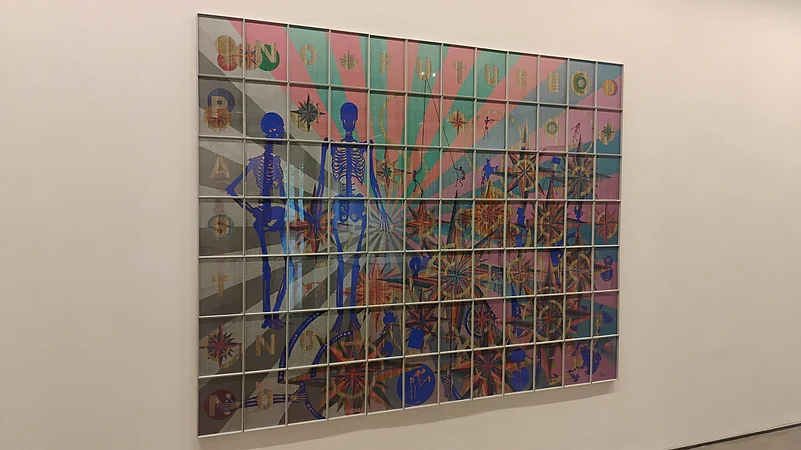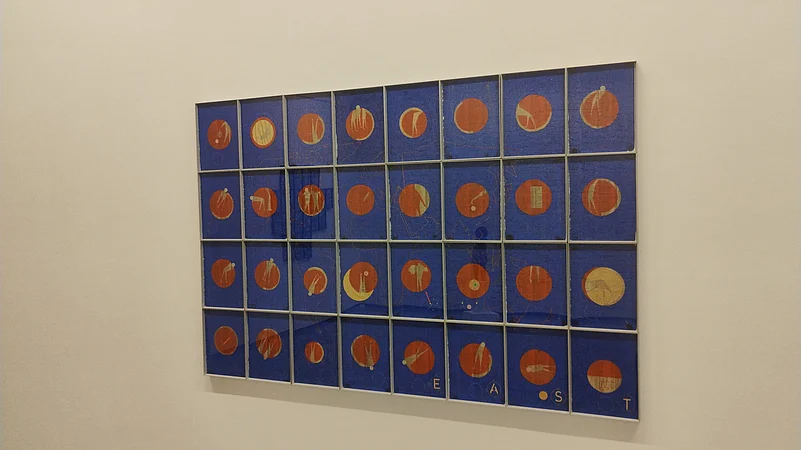In the bustling, history-soaked lanes of Mumbai’s Fort area, Naresh Kumar speaks about how the city has transformed over the years. “I have visited Mumbai five times, and I’ve seen the city evolve from Bombay to Mumbai,” he says. Cities, he believes, don’t just change around us, they change us. In Act of Republic, currently on display at the iconic Chemould Prescott Road till August 22, Kumar explores the layers through which individuals shape their lives and adapt to those shaped by society.
His work unfolds slowly, revealing themes that are both personal and universal. “I try to find a contemporary vocabulary that reflects both local and global perspectives,” he says.

Kumar draws directly onto these delicate pages, overlaying new marks on a fading past. Traces of the Patna Kalam painting style echo through his work, but he reshapes every inherited tradition into something distinctly his own. His materials like indigo, mica, marble dust, cotton cloth, are gathered from daily life, sourced from both Mumbai and his native Bihar. “I have seen my mother decorate our home and the family temple with natural products. Since then, art has been a ritual for me,” he shares.
Life Through The Republics
Deeply moved by the resilience of Dharavi, Kumar’s series Protests examines how disruption affects the many republics that exist within people in Asia’s largest slum. “Friends from France and other countries visit, and I take them to Dharavi to show them the craftsmanship that exists there. But now, that artistry is being lost. Protests reflects this struggle,” he explains.

While many of his works depict places far from his birthplace, Kumar also reflects on how his idea of home has shifted. “During the pandemic, my mother in our village in Bihar asked me to return. But I left home 20 years ago. Through my art, I’m trying to build new republics, new understandings of home, of identity, and of what it means to exist,” he says.
Kumar’s international travels from France to Korea have shaped his views on how global icons influence our inner republics. One such figure, he notes, is Mahatma Gandhi. “Gandhi offered us a way of life. He urged people to return to their roots, to their villages. I believe Gandhi remains relevant today, his message still resonates,” Kumar adds.
Ultimately, Kumar’s work reflects the ongoing tension between the desire for freedom and the need for connection.















